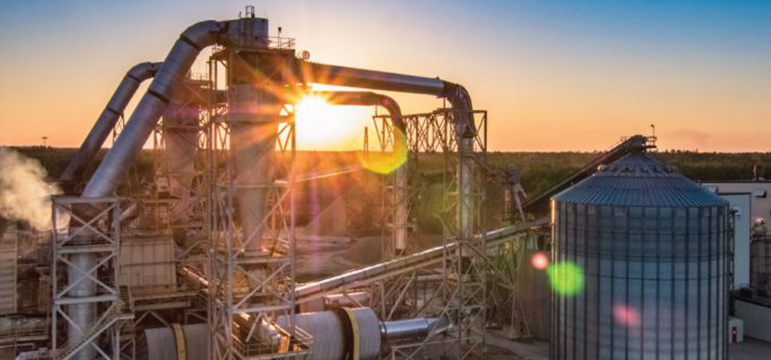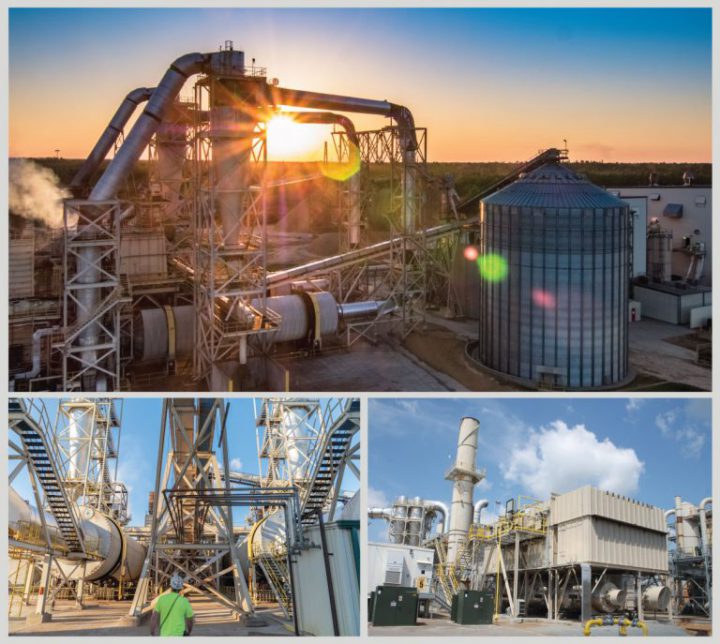Environmental Stewardship at Enviva

At Enviva, environmental stewardship isn’t just an add-on, it’s foundational to our business. Moreover, it’s what our customers expect. We source wood sustainably from regions where forest inventories are growing, never source from a tract where land use change will occur, and take special care to avoid areas with high conservation value. Operating in this way, consistent with our values, allows us to meet the strict requirements of our customers and their regulators. If this weren’t the case, we wouldn’t sell a single wood pellet.
Enviva’s business is growing, not despite our sustainability practices, but because of them.
Our approach to environmental stewardship extends to other aspects of our business as well. We work hard to reduce the carbon footprint of our entire supply chain by siting facilities to minimize transport distances. We ship in large vessels to improve transport efficiency per ton.
At our manufacturing facilities, we use every part of the wood we receive. Bark that cannot be used for pellets is used to fuel our dryers, and what is left over from that process is often used as fertilizer by local farmers.
Another important issue is air quality. We know that when power utilities switch from coal to wood pellets they not only reduce carbon emissions by up to 85% on a lifecycle basis, they also reduce the levels of sulfur, lead, arsenic and mercury.
But what about emissions at our own manufacturing facilities? As Enviva is growing and seeking to expand certain facilities and construct new ones, we require new environmental permits, and this permitting process – which typically includes opportunities for communities to weigh in – has given a small but vocal set of activist critics an opportunity to get press attention. Ironically, as activists use the air permitting process to protest the forest products sector, they are often delaying installation of air emission control equipment at our plants designed to minimize emissions from the wood-pellet manufacturing process and provide cleaner air for our communities.

Here are some basic facts:
Our manufacturing process involves drying wood, reducing the size of each piece, and pushing it through a pellet press at high pressure that causes lignin, the natural adhesive in the wood, to form a crisp sheath that keeps the pellet together. Our pellets are 100% plant matter and we use no chemicals in our process. (After all, if you spill a ton of wood pellets, all you need to do is sweep them up.) Visit one of our plants and you’ll smell pure wood (or nothing at all!) and see water vapor in the form of steam coming out of a stack as wood goes through the drying process.
For all the accusations activists throw at us, the reality is that all we’re doing is getting the moisture out of wood and condensing it into a form that is efficient and safe for transport.
All of Enviva’s manufacturing plants are designed and built to meet or exceed the applicable air quality regulatory requirements. Like safety, this is an area where we will never compromise. All of our facilities operate with legal and valid air permits. We use state-of the art industry-proven air emission control technology to reduce emissions from our manufacturing process, and in many cases, we have voluntarily installed more equipment and controls than are required by law. We work closely with environmental regulators to ensure continued compliance with the Clean Air Act.
Our manufacturing facilities have highly-trained environmental health and safety personnel. Our facilities are also tested at the start of their operations and then periodically on an ongoing basis by third party stack testing auditors in coordination with state environmental regulatory agencies. And the compliance test reports are made publicly available by the state agencies.
All that said, continuous improvement is in our DNA and we are always challenging ourselves to do even better. If you read our recent blog about our new Responsible Sourcing Policy, then you’ll have a sense of how we systematically look at our activities, invite constructive scrutiny, and take steps to implement improvements. This applies to everything we do from sourcing and efficiency to engineering and training.
Our plant leaders and community outreach team regularly engage with neighbors through formal listening sessions, participation in local events, or partnering on projects to support the community. If a neighbor ever raises any concerns about our activities, we thoroughly investigate, find a solution to fix the problem if needed, and report on the results to the highest levels of the company.
Environmental stewardship can mean a lot of things. To us it means displacing coal, fighting climate change, growing more trees, protecting sensitive ecosystems, contributing to cleaner air, reducing waste, and always being a good neighbor.
